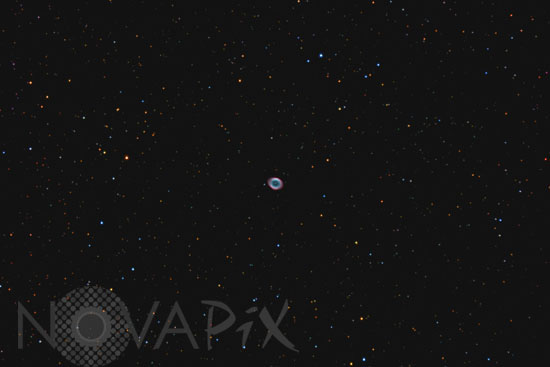Photo Agency - Astronomy - Space - Nature

The Ring nebula (M57) in Lyra
author: J.Lodriguss/Novapix
reference: a-nep67-20006
Image Size 300 DPI: 19 * 13 cm
The Ring Nebula, M57, is the most famous example of a planetary nebula. Located about 2,000 light years away, it has an apparent diameter of 1 arc minute and a real diameter of about one light year. At magnitude 9.0 its high surface brightness makes it an easy object, even from the city and even with small telescopes. Despite their name, planetary nebulae have nothing to do with planets. They were named originally because their discoverers observed them visually and they did not appear as stellar point sources, but rather as small diffuse objects that resembled the outer planets in our solar system such as Uranus and Neptune when seen in a telescope. Planetary nebula are shells of gas shed by stars late in their life cycles after using up all of their nuclear fuel. The star then ejects a significant portion of its mass in a gaseous shell, which is illuminated by its extremely hot central star, which is just the core left from the original star. The star at the center of the Ring nebula has a surface temperature of 216,000 degrees Farenheit or 120,000 degrees Celsius. Our own star, the Sun, is expected to undergo the same process in a couple of billion years. Planetary nebulae do not last long at all in cosmic terms, the shell of gas expands and diffuses, becoming invisible, and the star turns into a white dwarf.
Keywords for this photo:
2008 - ASTRONOMY - DWARF - DYING STAR - EVOLUTION - LYRA - M57 - NEBULA - NGC 6720 - PLANETARY NEBULA - STAR - WHITE DWARF -
Contact : Stéphane Aubin +33-(0)9-51-26-53-76
© Novapix - All rights reserved


